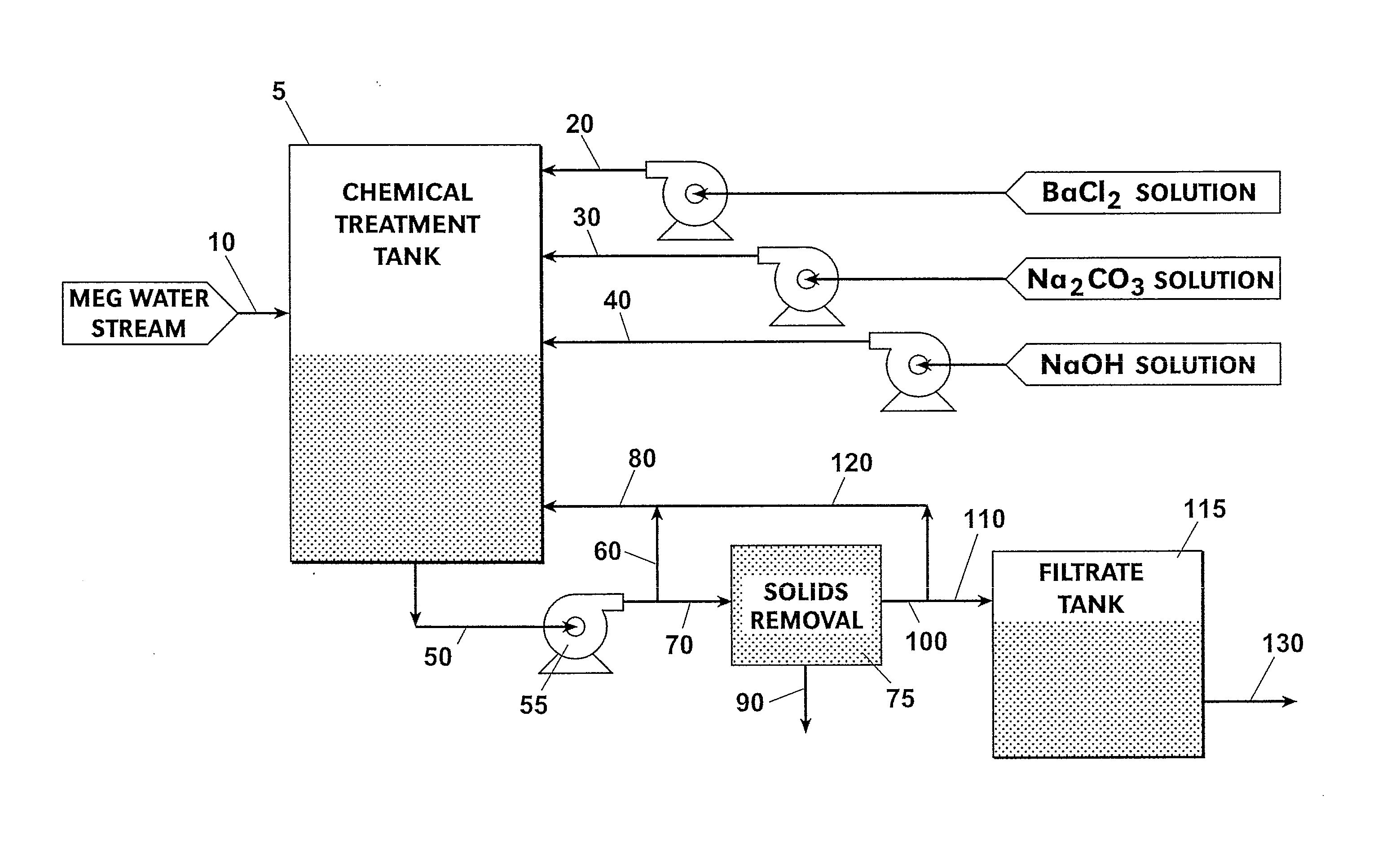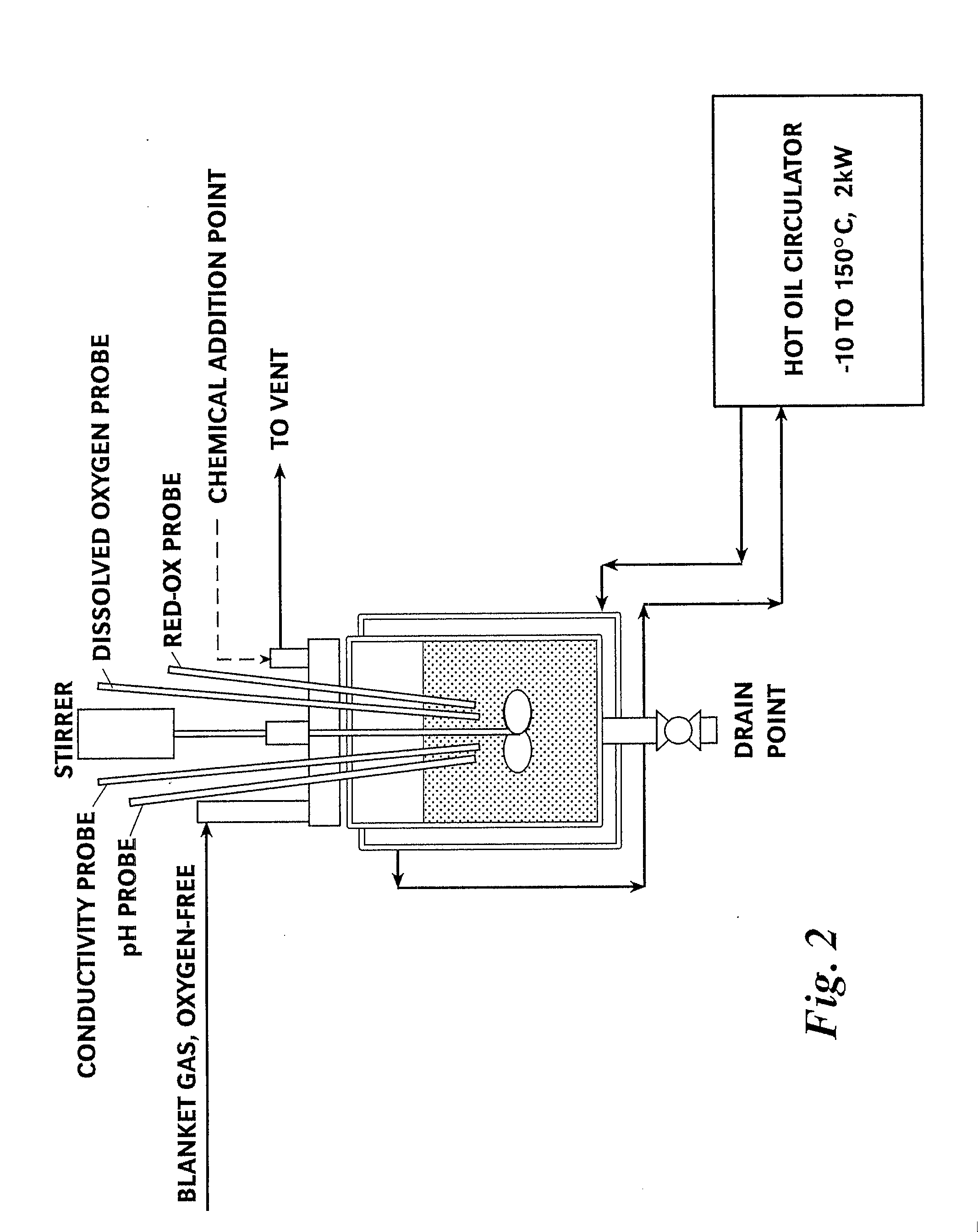Divalent Ion Removal From Monoethylene Glycol-Water Streams
- Summary
- Abstract
- Description
- Claims
- Application Information
AI Technical Summary
Benefits of technology
Problems solved by technology
Method used
Image
Examples
Embodiment Construction
[0034]A system and process made and practiced according to this invention treats MEG-water streams so that the MEG can be re-used in the gas production pipeline system. More particularly, the system and process are designed for the simultaneous removal of divalent cations and sulfate from MEG-water streams through the addition of alkalinity and barium ions. Divalent cations may include, but are not limited to, calcium, magnesium, iron, strontium, and barium. Depending upon the concentration of divalent ions in the MEG-water stream, its pH, and other factors, the alkalinity may be a sodium carbonate solution, a sodium hydroxide solution, a potassium carbonate solution, a potassium hydroxide solution, or a combination of the above.
[0035]Referring to FIG. 1, a system for removing divalent ions from a MEG-water stream includes a chemical treatment tank 5 to receive the incoming MEG-water stream 10, which contains calcium, magnesium, and sulfate ions. The chemical treatment tank 5 also r...
PUM
 Login to View More
Login to View More Abstract
Description
Claims
Application Information
 Login to View More
Login to View More - R&D
- Intellectual Property
- Life Sciences
- Materials
- Tech Scout
- Unparalleled Data Quality
- Higher Quality Content
- 60% Fewer Hallucinations
Browse by: Latest US Patents, China's latest patents, Technical Efficacy Thesaurus, Application Domain, Technology Topic, Popular Technical Reports.
© 2025 PatSnap. All rights reserved.Legal|Privacy policy|Modern Slavery Act Transparency Statement|Sitemap|About US| Contact US: help@patsnap.com



